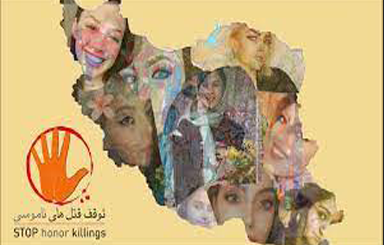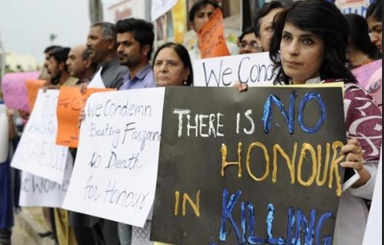Feminism and Peace: Do Women Want Peace or Supremacy?
Author Shahla Abqari:
Men’s treatment of the feminist movement led me to review and republish one of the articles I wrote several years ago on women’s peace. Especially when many talk about feminism, they consider it a “feminism” or “anti-masculinity” phenomenon.
The following is an overview of research on feminism and peace seeking to show whether feminist women really want peace or supremacy.
The feminist movement is a global process with a long and tumultuous history. This movement began in the mid-seventeenth century as an attempt to critique the status of women and realize their rights. Today, feminism is a modern and dynamic theory in which theoretical production is constantly taking place and has no boundaries, and its central point is the denial of domination over women. During the two hundred and one years that have passed since the history of the feminist movement in the world, signs of women’s supremacy have rarely been seen. In the late seventeenth century, the ideology of housekeeping believed that women were superior, more moral, and chaste beings and should not be contaminated by the shortcomings of the male world, so women’s place in the home is to protect their particular virtues (1).
In 1848, Mrs. Eliza Stanston declared that “man is inferior to woman in all moral virtues, not because of her nature, but because of wrong education.” Men have cultivated the moral nature of women out of selfishness, but have paid no attention to their moral shortcomings. As a result, women now have superior virtues (2). At the same time, Jane Forhack expressed her belief that “female instinctual femininity is the highest morality that society now needs to confront the male extremism that is everywhere seen in unjust and unequal laws” (3) . ” The Progressive Movement of 1890 saw the emphasis on women’s moral virtues as a substitute for men’s sins and espoused it as one of the central tenets. Marzani Liver wrote in On the Sphere and the Influence of Women, 1894: “Women, in my view of them as the superior half of humanity, with a more subtle and sensitive nature than men, and with a more refined and spiritual organization, must be the guardians of public morality” (4). In order to emphasize the equality of men and women, Charlotte Gilman believed that by bringing women into the public arena, women’s virtues would spread outside the home and all political problems would be solved by bringing women’s values into society. In his book The World Made by Men, he examines the history of world wars and shows that it was men who created many problems for human societies by creating wars. He believed that the problem of war and the resulting problems would be solved only with the entry of women into the world of politics and the formation of society (5). In order to emphasize the equality of men and women, Charlotte Gilman believed that by bringing women into the public arena, women’s virtues would spread outside the home and all political problems would be solved by bringing women’s values into society. In his book The World Made by Men, he examines the history of world wars and shows that it was men who created many problems for human societies by creating wars. He believed that the problem of war and the resulting problems would be solved only with the entry of women into the world of politics and the formation of society (5). In order to emphasize the equality of men and women, Charlotte Gilman believed that by bringing women into the public arena, women’s virtues would spread outside the home and all political problems would be solved by bringing women’s values into society. In his book The World Made by Men, he examines the history of world wars and shows that it was men who created many problems for human societies by creating wars. He believed that the problem of war and the resulting problems would be solved only with the entry of women into the world of politics and the formation of society (5).
The first sparks of the peace movement began in the early eighteenth century, with activists such as Maria Weston and Lucria Matte, early feminists. They combined the traces of violence and war with an emphasis on women’s equality. During the 19th and 20th centuries, many women in reform-loving and women’s rights societies associated the issue of peace and love with women, and believed that men should join the same ideology. From 1880 to 1915, women’s organizations generally acknowledged that there was a close connection between the suffrage and peace movements, and that in order to claim suffrage, one had to be anti-war. They believed that because men throughout history have often used and been affected by war and violence to solve the problems of societies, violence and war in societies will not go away if they are the source of the work (6).
The first Women’s Peace Party was formed in 1915 by Jane Adams. It was the oldest women’s peace party and still operates today as the International Women’s League for Peace and Freedom. The party’s founders believed that women wanted peace because their physiological role as mothers and the creation of life gave them a pro-life role. On the contrary, men are trained in a situation where love and peaceful thoughts are less strengthened (7).
With the start of the new feminist movement in 1960, there was a rift between peace and feminism of previous years. New feminists have increasingly lost faith in the relationship between peace and feminism. Although many feminists still believed that men tended to be hostile and violent, they were no longer convinced that women’s motherly role should lead them to non-violence. On the other hand, they were no longer convinced that women should pursue peace-building ethics as the true expression of their humanity. They thought that having such beliefs and mindsets might make women victims of and obedient to male violence. Based on such an argument, they argued that women should learn how to deal with men’s violence and fight it if necessary. By using this type of reciprocal violence against men, even in self-defense, the last strands of the relationship between feminism and peace were threatened with disunity (8). In the face of this radical feminist view that reciprocal violence could be used, at least as a defense against male violence, the peace activists of the women’s movement endangered their peaceful ideas and took a defensive stance. These conditions forced them to redefine and support the link between feminism and nonviolence in order to resist the hypothesis of radical feminism, which stated that women were inactive and victimized in this regard. Although the spread of radical feminism in the 1970s somewhat undermined peace feminism, parts of it remained and gained strength again. In the book “Re-weaving the tour of life: Feminism and Nonviolence, ”explains Pam McAllster, explaining that feminism fights for a peace movement that seeks a higher combination of ending violence and radical feminism and brings a new perspective on humanity and a world without war to the future (9). ). Women’s self-awareness in the peace movement of the 1960s and 1970s led to the recognition of the severity of gender discrimination in the male leadership of the peace movement. Women in peace organizations clearly saw and understood the patriarchal tradition and that women are still dominated by men. They saw that women were expected to do only small things like typing and bookkeeping, and men were expected to do basic decisions and tasks. Women in peace organizations clearly saw and understood the patriarchal tradition and that women are still dominated by men. They saw that women were expected to do only small things like typing and bookkeeping, and men were expected to do basic decisions and tasks. Women in peace organizations clearly saw and understood the patriarchal tradition and that women are still dominated by men. They saw that women were expected to do only small things like typing and bookkeeping, and men were expected to do basic decisions and tasks.
Awareness of gender discrimination in the peace movement led many from the movement to join the feminist movement, and those who remained in the movement sought to criticize gender discrimination among male leaders and sought to promote the idea of equal partnership between men and women in leadership. It was in this context that women in the 1980s formed separate organizations that linked feminism and peace-seeking, and this marked the beginning of a movement called peace-seeking or peace-seeking feminism. One of the ways that pacifist feminism used the link between feminism and peace was to show that male violence against women at home or on the street continues on the battlefield. For many men, violence on the battlefield was serious and important, and if violence against women at home seemed private and they could not understand the relationship between the two. Peace-loving feminists, however, believed that both forms of violence were part of a patriarchal mindset, and that accepting women as victims and men as aggressors was an educational ground that led to male violence on the battlefield. Masculinity transforms gender relations into power relations, that is, the relationship between the dominant and the defeated.
There are various reasons for explaining pacifist feminism. Some research studies based on pacifist views show that there is generally no fundamental difference between men and women in this regard, but that feminist women are more pacifist and different from men (10). Other research suggests that women are more liberal in their approach to issues such as war, peace, and disarmament. But this is not rooted in gender differences (11). A group of feminists contrasts the pacifism of women with the belligerence of men, arguing that women emphasize the ethic of care and the ethic of responsibility, and that men favor the ethic of justice or the ethic of rights. They believe that because life-saving is a natural and inherent duty for women, seeking peace and those civic virtues that help promote peace prevail for them and make them seek peace (12).
There are also pacifist feminists who see women as different from men in their view of the world, emphasizing that this different view does not necessarily stem from inherent or biological differences between men and women, but depends on their sociability. From birth, women learn to substitute collective interests for personal gain and to always see everything in relation to each other (13 and 14) Boys become independent and violent because they are not the same sex as their mothers. Praising war in masculine culture can be a sign of men’s violence (15).
Nancy Hark Sack states that war and violence are psychologically established in men, and that belligerence emphasizes their masculinity (16). In addition to women’s reasons for seeking peace in terms of inherent differences in education or insight, many peace-loving feminists emphasize that despite women not participating in war decisions or not participating directly in most wars, they are the ones who Most of all, they are victims of various crimes such as homelessness, rape, captivity and torture on a large scale, and they suffer from the militarization of governments. Therefore, it is mainly women who stand up against war and militarism and consider it a gender issue (17). Peaceful feminism has reached a stage in recent years that distinguishes itself from other peace movements in the following three areas (18 and 19):
1. In contrast to traditional world politics, which defines peace only in the absence of civil and military warfare, pacifist feminism declares true peace not only the absence of war but also the attainment of positive cultural and social goals. In this context, more emphasis is placed on liberal ideas, in order to build a moral society based on the values of all members of that society.
2. Peace-loving scholars define negative peace as the absence of war, while peace-loving feminist scholars do not change the definition of negative peace by including violence based on gender, racial, and religious discrimination against women, children, and men. In this definition. War in any society can include widespread violence against women, children and minorities.
Most importantly, pacifist feminists extend the definition of peace to positive peace. Positive peace establishes structural non-violence. Because structural violence is rapidly becoming a hallmark of societal violence, pacifist feminism sees attention to this type of violence as one of the most important factors in achieving peace.
What has been said in the context of pacifist feminism shows that this feminism is closer to liberal feminism in historical evolution than any other type of feminism. In liberal feminism, the struggle of feminism is to pursue equal political and economic rights for the various strata of women in society. The group’s feminists believe that society and the law give men rights, roles, and privileges, making them the dominant force in society, and thus shaping the role and behavior of women. Thus, by changing the laws and structures that have emerged, the dominance of men can be eliminated so that women can equally participate and play an active role in social, political and leadership decision-making structures (21).
Today, feminist scholars have concluded that gender equality between men and women is directly related to peace and is a necessary precondition for lasting peace.
In 2000, the UN Security Council adopted Resolution 1325 “Women, Peace and Security”, which was a success for the women’s peace movement and feminism, and for the first time in history, it documented women’s participation in preventing war and establishing peace. It is obligatory (21). Prior to the resolution, women were told locally and internationally that “peace is a difficult issue and not a women’s issue.” However, evidence of informal women’s negotiations showed that women’s participation in peace negotiations increases the stability of peace.
After the adoption of this resolution, efforts for women’s participation in war prevention and peace negotiations have increased, but unfortunately the implementation process of this resolution is very slow and women have not been present in most peace talks and their participation is between 1 and 2%. (22).
Accepting values such as women’s ability, skill, and management to prevent war and bring about peace is the beginning of women’s participation in major peace negotiations and decisions that will lead to the end of war and lasting peace.
Research over the past two decades on the recognition of women as peacekeepers has shown that the incentives and factors that expose women to violence make them to be peacemakers, and that women’s participation in negotiations is essential to preventing war and achieving lasting peace. (23 and 24).
The feminist research summarized above shows that pacifist feminism does not seek supremacy, and that is why it can be an important element in building lasting peace.
References:
1- Homeira Moshirzadeh, 2002, From Movement to Social Theory, History of Two Centuries of Tehran Feminism, Shirazeh Publishing, p. 76
2 – Schnier, M., 1972, Feminism: The Essential Historical Writings. New York: Random house. P. 107
3 – Cott, NF, 1978, The Grounding of Modern Feminism. New York: Yale University Press. P. 19
4 – Sinclair, A., 1965, The Better Half. New York: Harper and Row. P. 4
5 – Gilman, C., (1972 [1903]), The Home. Urbana: University of Illinois Press. P. 173
6 – Reuther, R., 1983, Feminism and Peace. Georgia: Christian Century. P. 771
7 – Addams, J., 1965, Newer Ideals of Peace. In The Social Thought of Jane Addams. Indianipolis: booksMerrell
8 – .Millett, K., 1974, Flying. Knopf: Sphere books
9 – McAlister, P., 1982, Reweaving the Web of Life: Feminism and Nonviolence. New Society
10 – Shea, J., 19991, Argument on American Politics. CA: Pasific Grove Press. P. 73
11 – Day, CL and Hadley CL, 1997, The Importance of Attitudes Towards Women’s Equality. Social
Science Quarterly P.674
12 – Snitow, A., 1989, A Gender Diary. In A. Harris and Y. King, eds., Rocking the Ship of the State.
Westview Press.
13 – McGlen, NE and Sarkee MR, 1983 Assay in Feminist Theory, NJ: Little Field Adams. P. 4
14- Reardon, B., Woman’s Vision OF Peace: Image of Global Security. In Turpin and Lorentzen, The
Gender New World Order. New York: Routledge. P. 212
15.- Chodorrow, N., 1978, The Reproduction Mothering Psychoanalysis and the Society of Gender.
Berkely: University of California Press.
16. – Hartscokck, N., 1983, Difference and Domination in the Women’s Movement. In Lessinger and
swerdlow, eds. P. 157
17 – Turpin, J. and Lorentzen, LA, 1996, The Gender New World order. New York: Routledge, P. 2
18 – Peace Feminism in International Relations, http://www.du.edu/~syscoate
19. https://www.visionofhumanity.org/defining-the-concept-of-peace/
20. Damham Habibi Tabar, Peace in the Discourse of Feminism – 2038-8388
21. https://www.un.org/womenwatch/osagi/wps/2000
22 .https://kvinnatillkvinna.org/feminist-peace/
24. https://icanpeacework.org/2022/03/08/she-builds-peace-international-womens-day/























